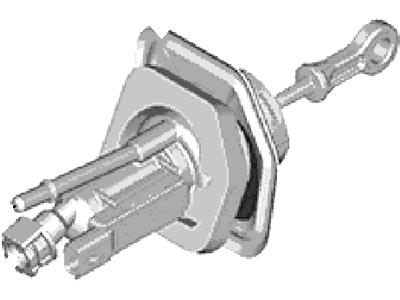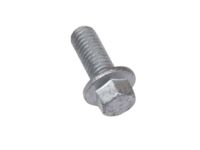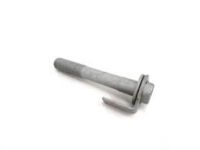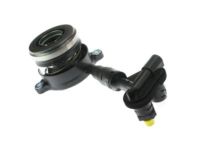To remove the clutch master cylinder on 2012 and earlier models, start by disconnecting the pushrod from the clutch pedal under the dashboard. Use locking pliers to clamp the clutch fluid feed hose a couple of inches downstream of the brake fluid reservoir, then disconnect the reservoir hose from the clutch master cylinder. Disconnect the hydraulic line fitting at the cylinder using a flare-nut wrench, ensuring to have rags ready for any fluid loss, and cap the ends of the line to prevent leakage and contamination. Next, remove the battery tray and battery, followed by disconnecting and removing the PCM and its mounting bracket from under the instrument panel. For 2010 through 2012 models, remove the large nut securing the clutch master cylinder to the driver's side of the firewall, then remove the two nuts on the engine side that secure the cylinder to the power brake booster before detaching it from the firewall, taking care to avoid brake fluid contact with the paint. For 2013 and later models, begin by removing the battery tray and battery, then the knee bolster and steering column covers. Disconnect the quick-connect fittings from the clutch master cylinder, remove the clutch pedal-to-firewall mounting nuts, and lower the clutch pedal. Disconnect the pushrod lock pin and remove the clutch master cylinder from the pedal assembly. For installation on 2012 and earlier models, position the master cylinder on the firewall and install the interior mounting nut finger tight, then connect and tighten the hydraulic line fitting. Secure the engine-side mounting nuts to the specified torque, attach the fluid feed hose, and reconnect the pushrod to the clutch pedal after reinstalling the PCM. For 2013 and later models, slide the clutch master cylinder into the pedal assembly, ensuring the push rod is centered, then insert the locking pin. Install the clutch pedal assembly to the firewall, tighten the nuts, connect the quick-connect fittings, and reinstall the trim panels. Finally, fill the reservoir with brake fluid conforming to DOT 3 specifications and bleed the clutch system.
Posted by FordPartsGiant Specialist 







